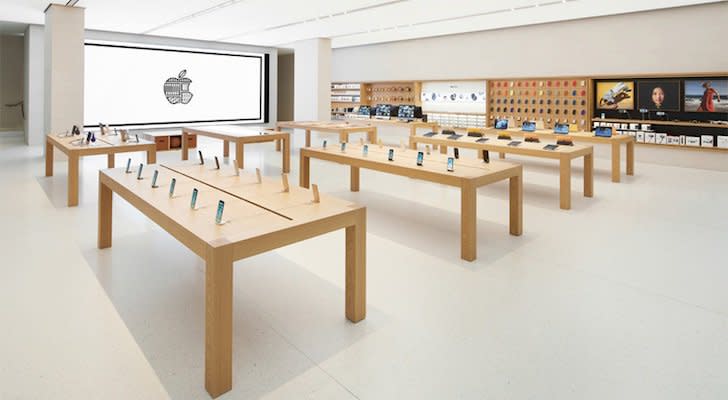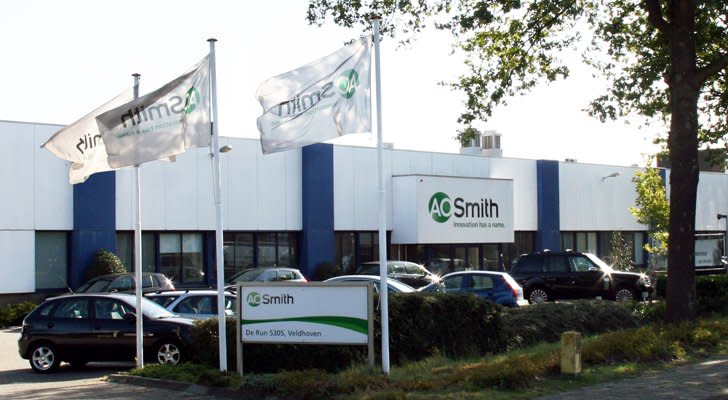7 Dividend Stocks That Could Double Over the Next Five Years
I saw article recently that caught my attention. The subject was dividend stocks, and it highlighted 32 that could double in value over the next five years.
Who wouldn’t want to read this kind of article? Heck, ya. Where do I sign?
Using the Rule of 72, to double in value in five years a stock’s got to deliver an annualized total return of 14.4%. That sounds easy enough.
InvestorPlace - Stock Market News, Stock Advice & Trading Tips
Care to guess how the S&P 500 performed over the past five years? I’ll save you time.
The SPDR S&P 500 ETF (NYSEARCA:SPY) had an annualized total return of 11.3% over the past five years through April 22. The Invesco S&P 500 Equal Weight ETF (NYSEARCA:RSP), the equal-weight version of the S&P 500, generated an annualized total return of 9.6%, 170 basis points less than SPY and 480 basis points less than a 14.4% total return needed.
So it’s going to be difficult to find seven stocks that pay a dividend and can appreciate at a double-digit pace. And to make the task even more difficult, I’m going to find seven dividend stocks that doubled in price over the past five years and look ready to do it again over the next five.
Here goes nothing.
Domino’s Pizza (DPZ)

Source: Shutterstock
5-Year Annualized Total Return: 29.4%
Dividend Yield: 0.9%
Domino’s Pizza (NYSE:DPZ) is having an off year. It’s only up 7.5% year to date (including dividends) through April 22. It hasn’t had an annual total return of less than 19% in the past decade, let alone the past five years.
What’s wrong with DPZ stock, I ask somewhat facetiously? Not much. Domino’s reports Q1 2019 earnings April 24 and they’re expected to be good.
Over the past four quarters, DPZ had beaten the consensus estimate on three occasions, averaging a beat of 5.1% per quarter. In Q1, analysts expect earnings per share of $2.08, eight cents higher than a year earlier.
On the bottom line, analysts see Domino’s increasing sales by 7.7% in the first quarter to $846 million. A growth rate on par with last year’s first-quarter report. In terms of same-store sales, it’s expected to deliver 6.5% growth, 90 basis points higher than in the fourth quarter.
The first quarter will be Domino’s 101st consecutive quarter of same-store sales growth.
With technology driving Domino’s business in the years ahead, I’m confident that DPZ will make my list of repeat offenders.
Microsoft (MSFT)

Source: Mike Mozart Via Flickr
5-Year Annualized Total Return: 26.7%
Dividend Yield: 1.4%
I don’t think there’s any question Microsoft (NASDAQ:MSFT) is a much-improved company since CEO Satya Nadella took the helm in February 2014. I recently said as much, suggesting Microsoft is a much more focused company than it was five years ago. And what shareholder can forget the fact a $10,000 investment in 2014 is worth $32,650 today?
Unfortunately, if Nadella doesn’t get the company’s workplace culture under control, it might be all for naught.
“Microsoft’s lawyers have denied that the company systematically discriminates against women, and pointed out that the federal government has conducted nearly two dozen pay discrimination audits based on the company’s work as a contractor. The audits only resulted in one violation, according to evidence provided in court records,” wrote Vox contributor Alexia Fernandez Campbell April 11.
I’m inclined to believe that Nadella’s smart enough to know how important it is to make women comfortable enough to want to work at the company.
I’d be shocked if we don’t hear more in the coming months about the company’s moves to eliminate the boy’s club culture that currently exists.
If it does this, I don’t think there’s going to be a problem with MSFT stock doubling for the second time in ten years.
S&P Global (SPGI)

Source: Shutterstock
5-Year Annualized Total Return: 24.0%
Dividend Yield: 1.0%
It’s only appropriate that S&P Global (NYSE:SPGI), the people behind the S&P 500, more than doubled in price over the past five years. It’s got a great business that’s about more than stock indexes.
Last October, I recommended investors consider SPGI and six other fintech stocks I thought were going to benefit from the digitization move in financial services. I’ve liked SPGI for a couple of years now because it’s got diversified revenue streams
“Regarding profits, its indices business delivered a 65% operating margin, significantly higher than any of its other three operating segments, so it’s not time to write that business off just yet,” I wrote October 24, 2018.
In S&P Global’s latest quarter, its 2018 year-end, the indices business generated just 13.4% of its overall revenue. However, it generated 18.6% of the company’s operating profits.
Meanwhile, although its ratings business — the company’s largest by revenues and profits — saw little growth in 2018, the other three segments (Indices, Market Intelligence, and Platts) all had healthy gains on both the top and bottom line.
As long as the digitization of financial services doesn’t suddenly come to a grinding halt, I continue to see a long runway of growth for S&P Global.
Apple (AAPL)

Source: Apple
5-Year Annualized Total Return: 23.3%
Dividend Yield: 1.4%
By now you’ve probably heard that the long-running feud between Apple (NASDAQ:AAPL) and Qualcomm (NASDAQ:QCOM) is officially over. The companies came to a settlement agreement April 16.
Apple agreed to pay Qualcomm an undisclosed amount up front and has signed a six-year global patent licensing deal with the San Diego company with a possible two-year extension. Also, Qualcomm will supply Apple with chips for its 5G iPhone modems.
Questions remain why the two companies suddenly settled after barking at one another for the last two years. However, it’s never good to have legal issues hanging over your head, so the news should be viewed as positive for shareholders of both companies.
Apple reports earnings April 30 after the markets close.
InvestorPlace contributor Nicolas Chahine put it best recently when addressing the company’s weakness in 5G and how it might affect Apple’s stock price:
“The fundamental reason to own Apple stock is easy. This is the premier company on the planet and it has the financial statements to back it up. And it sells at a price-to-earnings ratio of 14, which is the cheapest of the technology mega caps,” Chahine wrote April 22.
I could not agree more.
Apple provides investors with a rock-solid balance sheet, robust free cash flow, and products and services that consumers want to use. It might not be the fastest to market, but they’ll do enough to deliver a double over the next five years.
Constellation Brands (STZ)

Source: Shutterstock
5-Year Annualized Total Return: 21.4%
Dividend Yield: 1.4%
Ever since Constellation Brands (NYSE:STZ) acquired 9.9% 0f Canopy Growth (NYSE:CGC) for CAD$245 million in October 2017, I’ve argued that investors would be wise to hedge their bets by taking half of what they could afford to lose investing directly in Canopy Growth and put that into Constellation stock.
Nineteen months later, Constellation has invested an additional $4 billion in Canopy for a 38% stake in the company with exercisable warrants that could take its ownership to 50%.
On April 18, Canopy Growth announced that it had signed a definitive agreement that gives it the right to buy 100% of Acreage Holdings (OTCMKTS:ACRGF), a New York City-based company that owns licenses to grow cannabis in 20 states with a total population of 180 million — or about five times the entire population of Canada.
Acreage Holdings’ shareholders will receive $300 million immediately.
Once cannabis becomes legal on a federal basis in the U.S., Canopy will exercise its right to buy Acreage, issuing to the company’s shareholders 0.5818 of a common share of Canopy Growth stock for each Acreage share held for a total value of $3.4 billion.
The deal gives Constellation further reason to happy about its multi-billion investment in Canopy Growth. Between beer, wine, spirits, and cannabis, Constellation has four ways to grow over the next five years. I’d be shocked if it didn’t double its stock price by April 2024.
A.O. Smith (AOS)

Source: Nvdongen via Wikimedia (Modified)
5-Year Total Return: 20.2%
Dividend Yield: 1.4%
It’s great to see Wisconsin-based A.O. Smith (NYSE:AOS) having a fantastic bounce-back year after suffering a rare down year in 2018. Up almost 32% year to date (including dividends) through April 22, it’s recovered most, if not all, its losses from last year.
I’ve been on the A.O. Smith bandwagon for almost seven years now.
I first covered the company in July 2012. I liked the fact it practiced globalization the right way. It manufactured products in China that it sold in China; the same applying to the North American and India markets.
“Regardless of what happens in North America, which is doing just fine, China and India will continue to represent a more important part of Smith’s overall business. At present, the two countries account for 24% of sales. Once India ramps up, I could see that easily doubling within five or six years. The world is its oyster,” I wrote at the time.
How’s it worked out?
Its China business accounted for 34% of its $3.2 billion in overall revenue in 2018, up significantly from 2012. That said, it expects its sales in China to fall in 2019.
Although a majority of its business comes from water heaters and boilers, A.O. Smith got into the water treatment business in 2012. It’s grown revenues in this segment from $35 million to $400 million, a compound annual growth rate of 42%.
I like this dividend stock doubling in the next five years.
ResMed (RMD)

Source: Shutterstock
5-Year Total Return: 17.5%
Dividend Yield: 1.5%
ResMed (NYSE:RMD) stock is down 11.9% year to date (including dividends), its worst performance on an annual basis since 2015.
If you have trouble sleeping, ResMed’s products could save your life. They manufacture and distribute medical devices such as sleep apnea machines that help you breathe at night. In recent years, it’s taken its products and utilized technology and data to make them that much more useful for patients in need.
Obstructive sleep apnea is the collapse of the upper airway making it difficult to breathe. For every 100 U.S. adults, only four out of the 26 that have sleep apnea know that they have it, providing a significant runway for growth.
Patients suffering from strokes, heart failure, Type 2 diabetes, and other chronic conditions, often also suffer from sleep apnea.
Another growth area for the company is the treatment of chronic obstructive pulmonary disease, commonly known as COPD; it’s the third leading cause of death worldwide affecting more than 380 million people and costing the U.S. healthcare system $50 billion annually.
Since making its first software-as-a-service (SaaS) acquisition in 2012, ResMed’s built a smart connected ecosystem to provide in-hospital quality of care in your home through the use of technology and data.
It’s a company that continues to keep up with technological change. I encourage you to learn more about this dynamic business.
At the time of this writing Will Ashworth did not hold a position in any of the aforementioned securities.
The post 7 Dividend Stocks That Could Double Over the Next Five Years appeared first on InvestorPlace.
